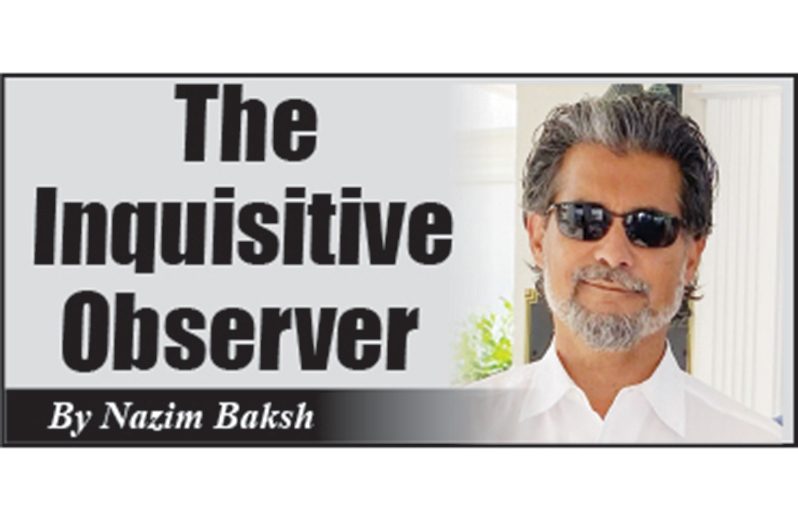WORDS alone can’t capture the grief, pain and anguish that parents and relatives experience when the life of a loved one is senselessly snubbed out. I saw a familiar raw emotion last week in the words and demeanour of the relatives of the two men who died during confrontations with police in Linden. I recognised it because I had seen it so many times before.
One of the hardest things I’ve had to do as a journalist with the Canadian Broadcasting Corporation (CBC) was interview parents and relatives of men, some of them just boys, who had been killed during encounters with police. To compound the tragedy, many of them had been coping with mental illness for years and were known to police, meaning their names and addresses were in a police database. Those deaths, mental health experts insist, were preventable.
On almost every occasion of death at the hands of police, leaders of Toronto’s Somali, Jamaican, Bangladeshi, civil liberty associations, human rights groups, and stakeholders in other ethnic communities would stage protests to demand that police adopt de-escalation techniques and save lives.
Having grown up in Toronto, the sight of a traffic cop with sirens blazing was enough to inspire in me a sense of dread and trepidation. What have I done? If you’ve been paying attention to news reports, you learn quickly to keep your hands on the steering wheel as a cop approaches your vehicle menacingly. Was I speeding? Is my tail light not working? Maybe the sticker on my licence plate has expired.
The officer demands your licence and insurance. There is no friendly greeting and certainly no indication that you could have a reasonable conversation. All you need to recognise at this point is that the officer has a gun and is trained to use it and that too many young men have wound up dead in situations just like this.
Between 2000 and 2023, over one thousand people have been killed during encounters with police in Canada. In 2022 alone, Toronto police were implicated in 69 deaths in use-of-force encounters.
Law enforcement agencies in North America, from the FBI down to municipal agencies, have begun to adopt de-escalation techniques to help officers better manage high-stress situations, calm down confrontations and prevent things from turning violent. The simple fact is that de-escalation saves lives, protects officers and builds trust with vulnerable communities.
Handling volatile situations calmly not only ensures public safety but also fosters stronger community-police relationships and reduces legal risks by minimising costly lawsuits. It’s easier said than done. Officers of the law often operate in highly stressful conditions where violence looms large.
According to the FBI, an average of 51 law enforcement officers are killed in the line of duty each year. Take another 57,000 who are assaulted annually, and you start to get a sense of how staggering this all sounds. But contrast it with the fact that the overall percentage of officers assaulted reflects just 0.09% of all civilian interactions, while police deaths represent 0.000008% of all interactions.
Two decades ago, there was hardly any actual de-escalation training in police academies, especially in Canada. It was not a thing. However, in 2022, with the introduction of the Law Enforcement De-escalation Training Act, $34 million was allocated to develop a national de-escalation curriculum and an additional $90 million was directed toward police departments to train local police. Most of this training was aimed at de-escalating situations that involve civilians suffering from mental health crises or drug abuse.
According to a CBC investigation, an estimated 460 Canadians suffering from mental health crises or drug abuse were killed during encounters with police between 2000 and 2018.
In the six years between 2015 and 2021, 1 in 5 or 1,400 people fatally shot by police in the United States suffered from mental illnesses, according to a Washington Post database.
The police departments that adopted de-escalation techniques saw upwards of a 40% decrease in serious use-of-force incidents during the same period. The Las Vegas Police Department reported zero incidents involving deadly force against unarmed civilians after implementing a de-escalation programme. The Dallas Police Department experienced a 64% drop in excessive force complaints.
What if the Guyana Police Force (GPF) were to adopt de-escalation techniques for all officers in its 12 divisions? For starters, Keon Fogenay might still be alive. There would be less reason for the residents of Linden to stage protests, burn tires and pelt rocks at police officers.
Not only would it lead to a reduction in civilian deaths and injuries, but it would also help build community trust and promote public safety. Studies have shown that when police departments adopt de-escalation techniques, they save a truckload of money by skirting the financial consequences that arise as a result of unjustified use-of-force incidents.
In the case of Guyana, there would have been no need to invest costly resources to activate an independent investigation led by the Regional Security System (RSS), a process that will stitch up valuable GPF resources. None of this would have been necessary, and public safety will remain GPF’s number one priority, while the trust level between police and the public will see a marked improvement.
DISCLAIMER: The views and opinions expressed in this column are solely those of the author and do not necessarily reflect the official policy or position of the Guyana National Newspapers Limited.



.jpg)








